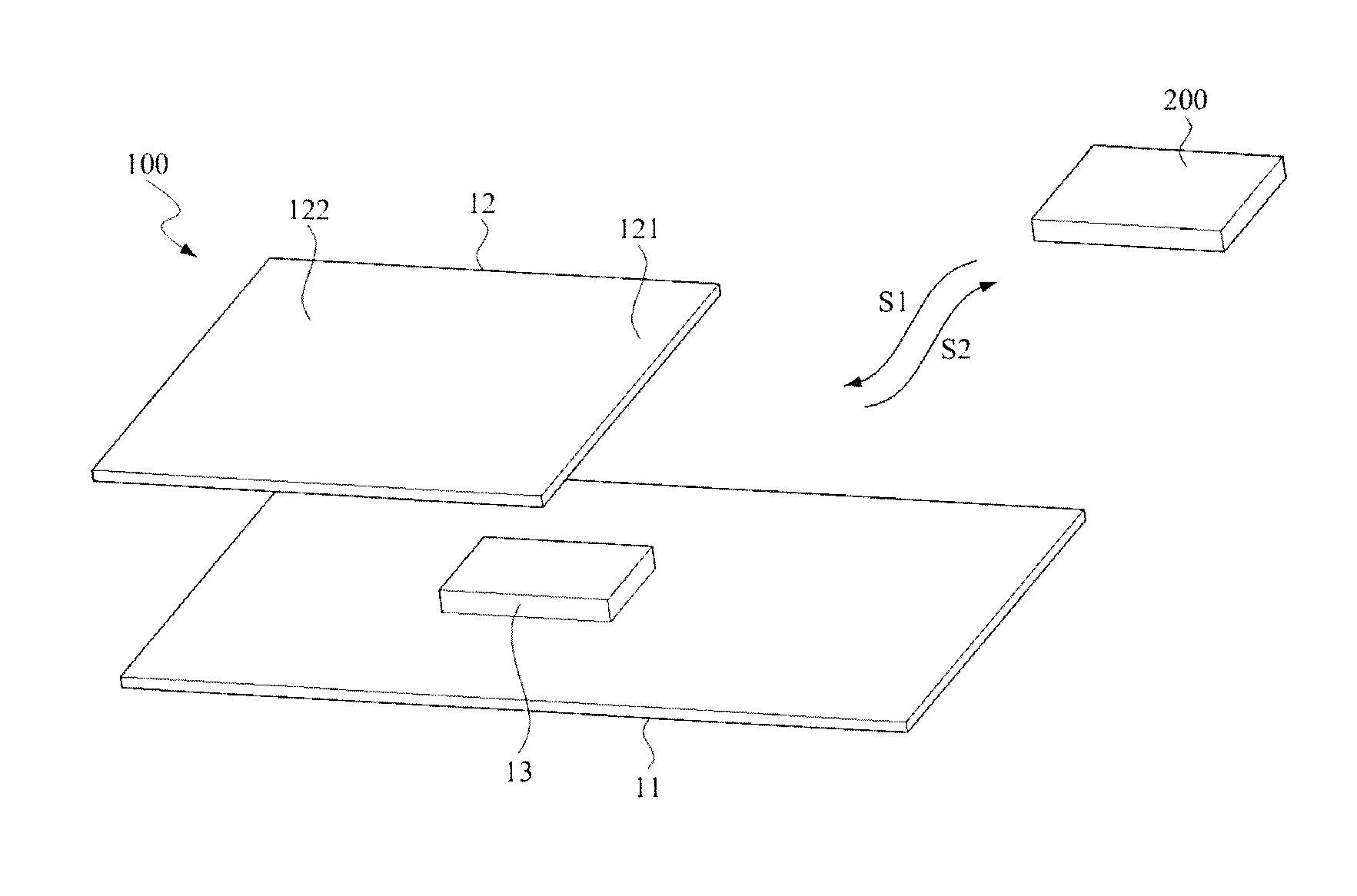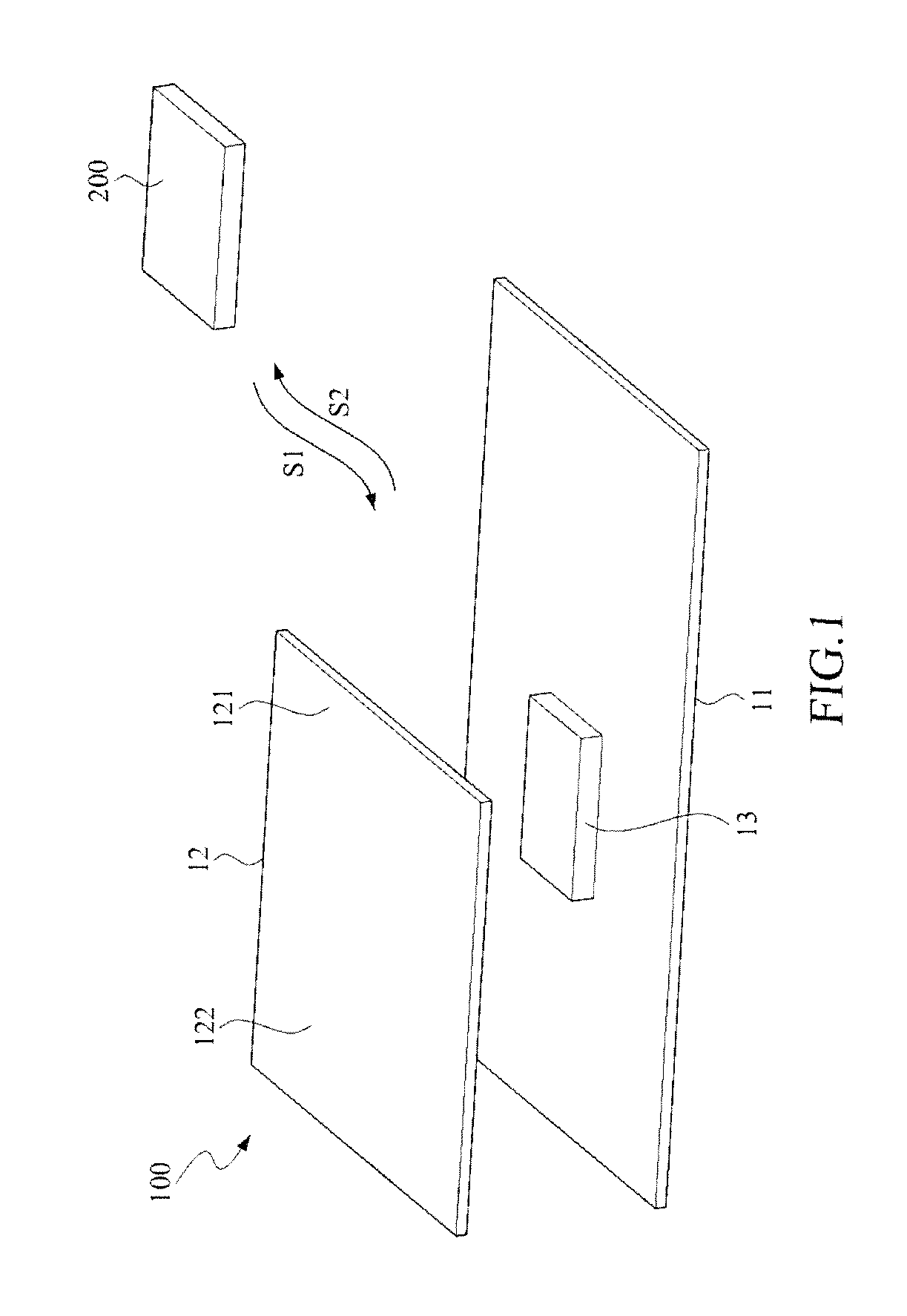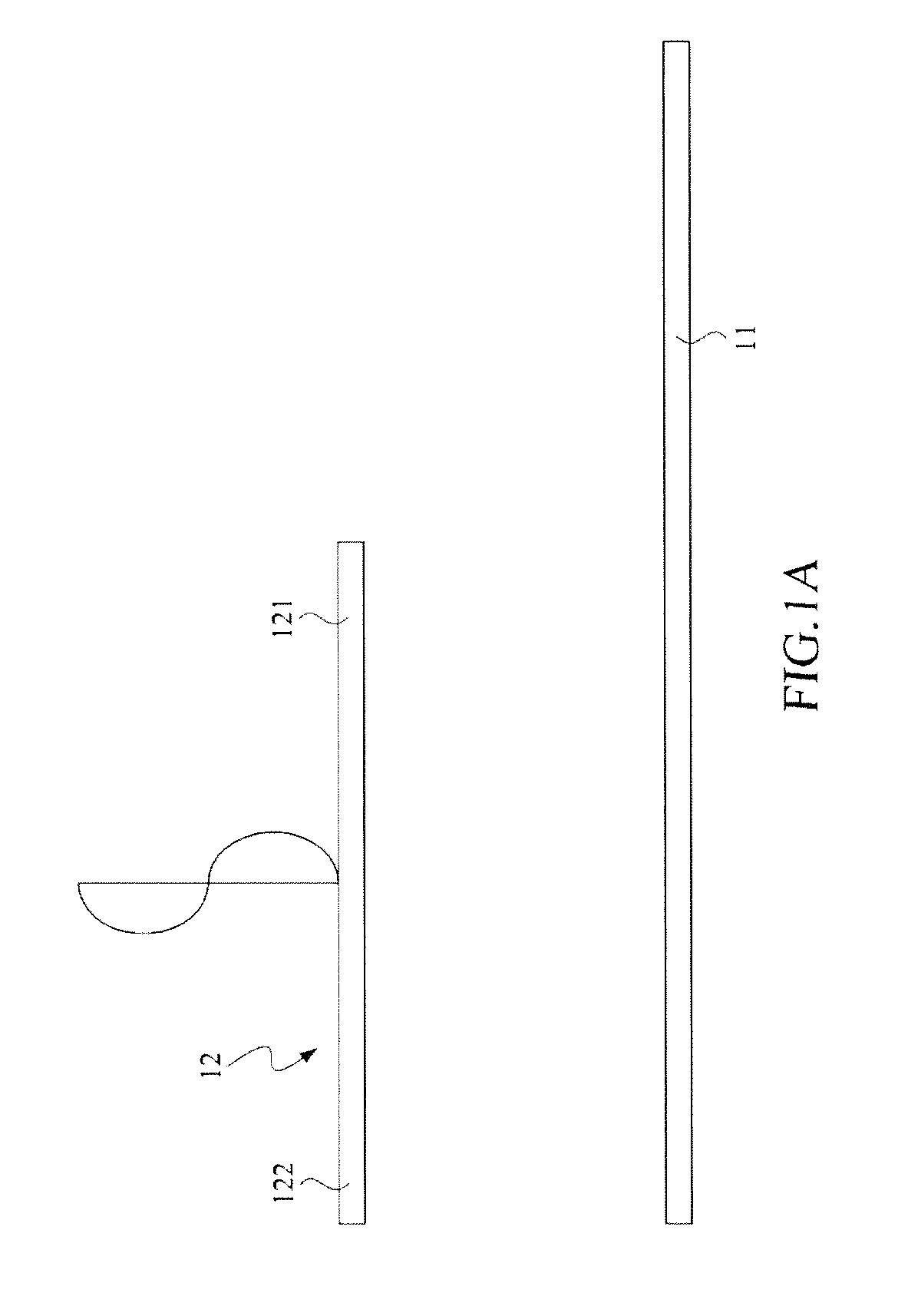RFID (radio frequency identification) tag
a radio frequency identification and tag technology, applied in the field of rfid (radio frequency identification) tags, can solve the problems of electromagnetic wave interference or absorbed, electromagnetic wave gain is too low, circuit inside cannot be driven, etc., to prevent the reading ability of rfid tags from being affected, and increase the signal strength of driving signals.
- Summary
- Abstract
- Description
- Claims
- Application Information
AI Technical Summary
Benefits of technology
Problems solved by technology
Method used
Image
Examples
Embodiment Construction
[0038]The present invention relates to an RFID (Radio Frequency Identification) tag, and more particularly, relates to an RFID tag including an electric or magnetic field coupling casing. Preferred embodiments of the present invention are disclosed in the following paragraphs for better understanding of the present invention. However, the scope of the present invention should not be limited only to the structure of the disclosed embodiments.
[0039]Referring to FIGS. 1˜5, wherein FIG. 1 is a perspective view of the first embodiment of an RFID tag according to the present invention; FIG. 1A is a lateral side view of the first embodiment of the RFID tag according to the present invention while FIG. 5 is a circuit diagram of an RFID (Radio Frequency Identification) module employed in the RFID tag according to the present invention. The RFID tag 100 is used for receiving the driving wave with a command signal S1 and backscattering the wave carrying an identification signal S2 to an RFID r...
PUM
 Login to View More
Login to View More Abstract
Description
Claims
Application Information
 Login to View More
Login to View More - R&D
- Intellectual Property
- Life Sciences
- Materials
- Tech Scout
- Unparalleled Data Quality
- Higher Quality Content
- 60% Fewer Hallucinations
Browse by: Latest US Patents, China's latest patents, Technical Efficacy Thesaurus, Application Domain, Technology Topic, Popular Technical Reports.
© 2025 PatSnap. All rights reserved.Legal|Privacy policy|Modern Slavery Act Transparency Statement|Sitemap|About US| Contact US: help@patsnap.com



